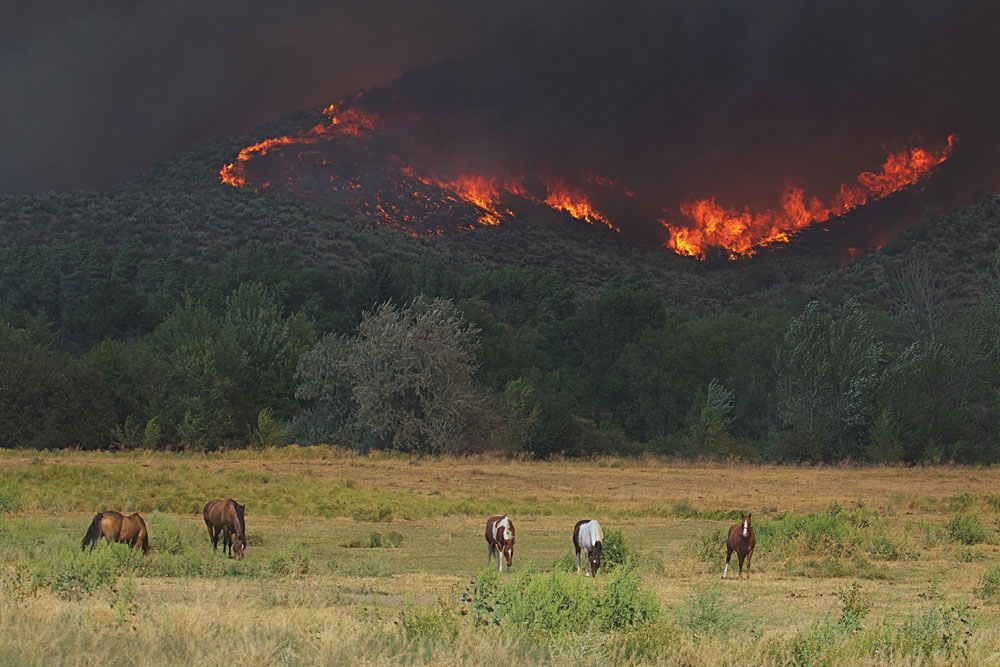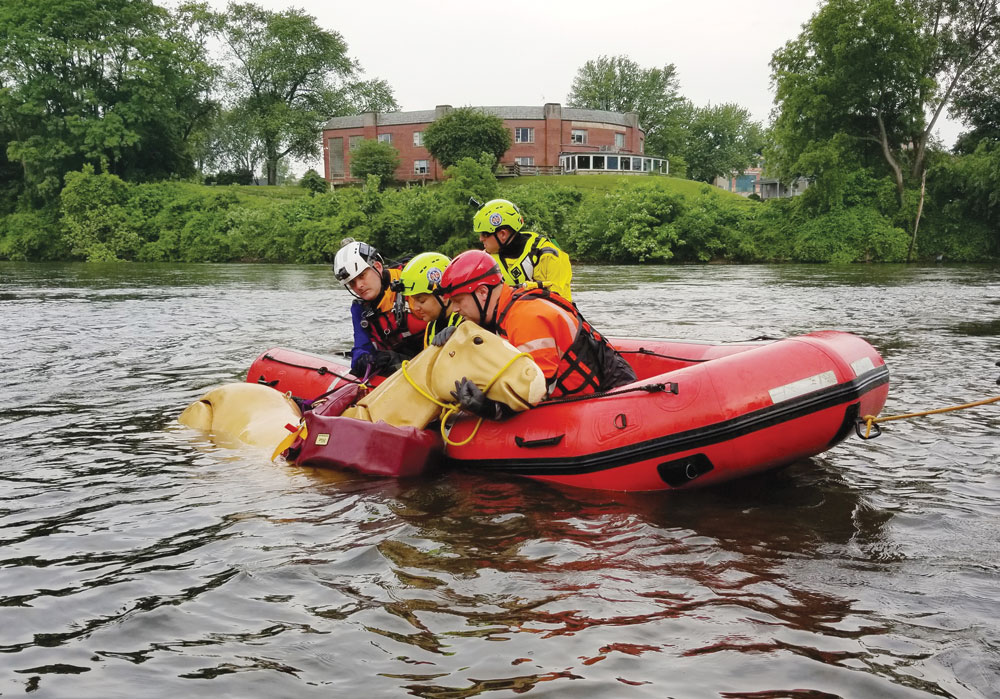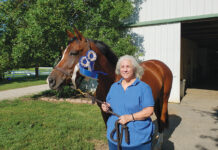Disaster strikes out of nowhere and sometimes horse owners aren’t ready for the outcome. Read on to learn how planning for a disaster can save your horse.

In the end, 35 horses died in the fire, and one trainer was burned over 50 percent of her body trying to rescue them. It took days after the fire had passed to locate all of the surviving horses, some of which had escaped to the surrounding wilderness.
Just a few months before, Hurricane Irma had torn through Florida, threatening not only humans but the many horses that live in the southern part of the state. Unable to evacuate north because the storm was predicted to strike there too, many horse owners were forced to shelter in place during the event, hoping their horses would survive the 150 mph winds.
The lesson horse owners learned during both of these tragedies was that disaster planning is crucial. If you think it can never happen to you, think again. Planning for disasters that can happen any time, can benefit your horses, life, and farm.
Planning for Fire
One disaster that horse owners can start planning and prepare for are fires. Horse owner Carrie Garufis of Orange, Calif., watched on September 25, 2017 as a fire burned in the nearby hills of Corona. A week later, the incident prompted Garufis and the other boarders at her community stable to get together to come up with a plan in case a fire threatened their stable. In early October, they were forced to put that plan into place.
“We thought we were prepared,” says Garufis. “Boy, were we surprised by what we missed.”
When news hit that another fire had started in the same place as the September 25 blaze, people at Garufis’ barn started hooking up their trailers.
“Some thought those people were being over-reactive, but when the winds whipped the fire at us faster than any of us imagined, the people who hooked up were ready to evacuate,” she says. “The first round of evacuations went smoothly, but coming back to get the horses left behind was severely hampered, as streets were getting clogged with traffic, including many horse trailers.”
Forced evacuations kept some trailers from returning to pick up horses, so people had to walk or ride their horses to an area to get picked up.
“One stable mate’s horse was picked up by an unknown good Samaritan and taken to an unknown stable,” says Garufis. “We ended up with 12 of our horses in a Trader Joe’s parking lot beyond the evacuation line while we worked at finding a location to get them to.”
Victoria Beelik of Santa Paula, Calif., an equine disaster planner and the author of Plan, Prepare, Implement: A Planning Guide to Safety, warns of the problem Garufis and her stable mates encountered that October day.
“The biggest issue horse owners deal with during a brushfire threat is being able to determine when they are truly threatened,” she says. “Many times, people hear of the fire and know the direction of the winds, but still deny that their property or boarding facility is at risk.”
According to Beelik, once horse owners realize there is a problem, the fire is too close. This causes panic, which transfers to the horses. This frenzy also creates a chain reaction of events.
“Last minute evacuations create panic, which panics the animals,” she says. “By the time they realize they need to leave, both animals and people are being exposed to dangerous smoke and ash. They also interfere with emergency vehicles trying to come in and help, and they have to deal with the traffic from everyone else who waited until the last minute.”
To avoid this, Beelik recommends planning right away, before any potential fire disaster.
“Planning means to start preparing far in advance—like now,” she says. “To prepare is not to plan—it is to get ready to leave. A well-known phrase is ‘ready, set, go.’ Prepare is the ‘set’ part of this saying. If people take the time to plan properly, this allows them to stay calm and minimize panic.”
In Plan, Prepare and Implement, Beelik recommends getting started by planning your emergency contacts. This should include two or more individuals you trust to take care of your animals in case of an emergency. These people should vary in geographical area and location.
“Two should be within proximity of your animals, but should be from opposite directions,” writes Beelik. “By having friends in different directions, you increase the ability to get your animals evacuated, since emergencies usually come from different directions.”
Beelik also recommends planning routes, gathering supplies and emergency items for your horses, and having your trailer set up and ready to go at a moment’s notice.
“Planning for emergencies doesn’t have to be hard work, and can be fun if it’s done correctly,” says Beelik. “Have parties with your emergency contacts and big training days with neighbors or fellow boarders. Make it social and productive at the same time.”

Horse Disaster Planning: Hurricane Prep
Another disaster that horse owners can start planning and prepare for are hurricanes. When Hurricanes Harvey, Irma and Maria struck U.S. coastlines last year, horses were among the most vulnerable residents. While humans can leave the area or shelter inside their homes during a hurricane, horses are harder to move and are exposed to the elements. They’re also subject to the aftermath of the storms, which can be worse than the actual event.
Sára Varsa, senior director of the Humane Society of the United States (HSUS) Animal Rescue Team, reports that her group experienced back-to-back deployments during Hurricanes Harvey, Irma and Maria.
“The needs of the horses impacted were similar, but the logistics involved in supplying those needs were vastly different,” she says. “From Texas and Florida to Puerto Rico, the flooding and damage left behind many horses without fresh water and appropriate feed.”
According to Varsa, thousands of horses in all of these regions needed immediate forage and potable water.
“There were also horses with injuries sustained during the storms that needed immediate veterinary treatment and intervention,” she says.
Given the dangers both during and after hurricanes, it’s no wonder horses were in trouble after these tremendous storms.
“Flying debris, power outages and flooding are all concerns during and after a hurricane,” says Varsa. “If you haven’t evacuated and you’re in a position where you may see impact, ensure that your barn tools and hazardous materials are securely tied so as not to become airborne and cause injury or harm.”
If you’re in an area that floods, Varsa says to make sure your horses are not contained in those areas. Rising and fast water can trap them or, in dire situations, cause drowning.
“Power outages during and after a storm will impact wells and automatic waterers, and standing water will likely contain hazardous chemicals and debris,” she says. “Make sure your emergency plan takes into account the need for 10 to 15 gallons of fresh and available water per day per horse.”
According to Heather Davis, executive director of Equi-Health Canada, providers of equine disaster preparedness classes, horse owners living in hurricane and extreme wind-prone areas, particularly the Eastern Seaboard of the U.S. and Canada, should take extra considerations when constructing shelters and barns.
“When designing or upgrading barns, resist cost-saving measures that compromise structural integrity,” she says. “Choose thicker support beams; not only on support walls, but as corner posts of stalls, to prevent complete loss in the event of a collapse. Also, locate barns and shelters on high ground in case of flooding, and assess the direction of common prevailing winds to choose orientation.”
Davis also recommends having evacuation in mind when designing, upgrading and maintaining horse properties.
“Ensure barn aisles are clear, and that stall hardware is easily manipulated by firefighters in heavy gloves,” she says. “Ensure trailers and emergency vehicles can enter and turn around easily.”
In order to be well prepared, Davis recommends knowing your local emergency evacuation routes and muster points.
“Think ahead of where you could go to get out of harm’s way if your region is hit by a hurricane,” she says. “You need a place that will be able to house livestock, since most Red Cross-type services can only support companion animals.”
Davis also suggests maintaining information packages on all the horses in your care in case you have to release them or leave them behind.
“Having proper identification, such as photos, any brand information, and heath record documentation that can be easily accessed, will assist in reuniting owners with horses after the storm,” she says.

Davis notes that horses that are difficult to catch or handle will be left behind by first responders and rescue volunteers.
“Ensure horses can be safely handled, and that there is a halter and lead line for every horse,” she says. “These must always be easily accessible to allow for quick evacuation.”
She also advises posting emergency information where it can be easily seen around barns, such as emergency contact numbers, the owner’s name and number, and evacuation plans.
When it comes to saving your horse from a disaster like a fire or a hurricane, preparation and planning is key, according to the experts.
“One reason horse owners don’t take the time to plan and prepare for emergencies is ‘it won’t happen to me’ thinking,” says Beelik. “If you live anywhere there is fire, hurricane, tornado, mudslide or flooding potential, it could happen to you.”
This article originally appeared in the September 2018 issue of Horse Illustrated magazine. Click here to subscribe!






